This article was co-authored by Mohiba Tareen, MD. Mohiba Tareen is a board certified Dermatologist and the founder of Tareen Dermatology located in Roseville, Maplewood and Faribault, Minnesota. Dr. Tareen completed medical school at the University of Michigan in Ann Arbor, where she was inducted into the prestigious Alpha Omega Alpha honor society. While a dermatology resident at Columbia University in New York City, she won the Conrad Stritzler award of the New York Dermatologic Society and was published in The New England Journal of Medicine. Dr. Tareen then completed a procedural fellowship which focused on dermatologic surgery, laser, and cosmetic dermatology.
There are 13 references cited in this article, which can be found at the bottom of the page.
This article has been viewed 70,404 times.
Facial burns are painful, and sometimes they're severe enough to require professional care. With some quick thinking and careful attention, a burn can heal within a few weeks. Large or severe burns need to be treated immediately by emergency care services. Even if the burn seems minor, however, you should still it get checked out by a doctor since the face is considered to be a sensitive area. In many cases, you can treat the burn at home with soap, water, ointments, and bandages.
Steps
Acting Immediately for a Severe Facial Burn
-
1Call for immediate medical attention. If your burn is white or charred and oozing clear liquid, you may be suffering from a severe burn. Other signs of a severe burn are blistering and sweating.[1]
- All chemical and electrical burns should be immediately checked out by a doctor, regardless of how serious they might look.
- If the person has a weakened immune system or another medical condition like diabetes, call for help. Similarly, if they are over the age of 60 or under 5, they should get immediate attention.
-
2Cool down the burn by running your face under cool water. While you wait for emergency care, try to reduce the damage of the burn. You can use a shower, hose, or sink. Alternatively, you can fill a cup of water and pour it over the wound. Keep the burn cool for up to 20 minutes to prevent more damage.[2]
- Do not use ice or ice water to cool down burns as the cold temperature could cause more damage. Similarly, avoid using butter, oils, or lotions on the skin immediately following a burn.
Advertisement -
3Place a layer of cling film or plastic wrap over the burn. Do not wrap the film tightly around the burn. Just place a single layer over the skin. This will protect the burn until you can get medical care, and it won't peel the skin off when you remove it.[3]
-
4Sit up as long as possible to reduce swelling. While it may make you feel better to lie down, it is better to sit up until you can get medical attention, especially if your eyelids are burned.[4]
-
5Keep yourself warm if you start going into shock. Signs of shock include sweating, cold clammy skin, rapid or shallow breathing, weakness, and dizziness. Drape a blanket over yourself or put a sweater on while you wait for care.[5]
-
6Get the burn debrided by a doctor. Debriding is the process of removing damaged tissue from the burn so that it can heal more effectively. To debride a facial burn, doctors may use a water jet tool to gently remove the burned tissue. In some cases, doctors may debride the wound by cutting away the burned tissue.[6]
- Debriding can be a painful procedure. You'll need pain medication to help you manage the pain.
-
7Undergo reconstructive surgery if needed. In some cases, your doctor may recommend surgery to reduce scarring or to graft skin onto the wound to help it heal. You may need to undergo separate surgeries for each region of your face (such as your cheeks, eyes, forehead, nose, and chin). Your doctor will discuss the best course of action for you.[7]
- Skin grafting is a procedure in which the surgeon will remove healthy skin from one part of your body and apply it over the wound. The skin will grow over the wound to help treat it.
- You will need to undergo anesthesia for surgery. Recovery times can vary based on the severity of the burn and the type of surgery done. It can take between 12-24 months for you to recover completely.
-
8Discuss whether a face mask is necessary with your doctor. Severe burns or burns that cover large parts of your face may require the use of a face mask. You would wear this mask for 18-20 hours a day for between 8 months and 2 years. The mask helps your face heal with minimal scarring by keeping your skin as flat as possible while healing.[8]
- You may be required to stay in the hospital while you wear the mask and recover.
Starting Treatment for Milder Burns
-
1Visit your doctor to assess the level of burn. If you did not require emergency medical treatment, make an appointment with your doctor as soon as possible. The doctor will do a physical examination of the burn. They will decide if it is a first, second, or third degree. In some severe cases, they may refer you to a burn specialist.[9]
- First degree burns are very minor and can be treated at home. These may be pink or red in color. They may be a little painful at first, but this will go away after a few days.
- Second-degree burns may be a splotchy red or white tone. They may be blistered. Second-degree burns smaller than 3 inches (7.6 cm) are usually treated in the same way as first-degree burns while larger second burns are considered to be more serious. Your doctor will likely recommend an antibacterial ointment and a painkiller.
- Third-degree burns are the most severe. They may start out as gray or white but turn brown or black. They may be painful or they may feel numb. There is a good chance you will need surgery.
-
2Report any symptoms you’ve experienced since your burn. Tell your doctor how you received the burn and how the burn has changed since the injury happened. In particular, be sure to tell your doctor if:[10]
- The pain has gotten worse since you were burned.
- The burn has changed colors.
- You have had any pus or blisters forming.
- You have had a fever since the burn.
- It is difficult for you to move parts of your face.
-
3Get a tetanus shot if you have not had a booster in 5 years. Burns are very susceptible to tetanus infection. If you have had a tetanus shot in the last 5 years, you may be safe. If you have not, tell your doctor so that you can get a booster.[11]
-
4Get a prescription for an antibiotic ointment. This ointment can help prevent your burn from becoming infected. Your doctor may prescribe an ointment containing chlorhexidine, silver nitrate, silver sulfadiazine, bacitracin or mafenide. Follow your doctor’s instructions to learn how much and how often you need to apply the cream.[12]
- If the burn is minor, your doctor may recommend an over-the-counter antibiotic ointment, such as Neosporin.
- Your doctor may also prescribe you an oral antibiotic.
Continuing Care at Home
-
1Clean the burn with running water. Dampen a clean cloth and gently pat around your burn to remove dirt and bacteria. When you're finished, rinse off your face with cool running water from a shower, hose, or cup of water. Pat the burn dry with a clean, dry cloth.[13]
-
2Shave facial hair around the burn. Get rid of all hair at least 1 inch (2.5 cm) around the burn. Use a disposable razor to gently shave away the hair. If you are having trouble shaving around the burn, ask your doctor for help.[14]
-
3Apply a gel ointment to the burn. If your doctor gave you a prescription for an antibiotic ointment, apply it according to the directions on the label. You can also use petroleum jelly such as Vaseline or Aquaphor or pure aloe vera gel. Apply the ointment to clean, dry skin once every 2 hours or as directed.[15]
- Do not use creams, lotions, oils, or butter, as these can irritate the burn.
- If you use vaseline or aloe vera gel, wear gloves or use a spatula to remove the gel from the container so it doesn't get dirty.
- Avoid using babies vaseline.
-
4Tape a non-stick gauze bandage over the burn. Talk to your doctor about the best kind of non-stick gauze to use. Cut a piece of gauze that is slightly larger than the wound itself. Use medical adhesive tape to tape the wound down to your face. Make sure that the tape does not stick to the burn itself. Replace the bandage once a day.[16]
- This will prevent the wound from rubbing against surfaces like pillows or scarves. If you often rest your hand against your face, a bandage will help you keep your hands away from the wound.
-
5Take an over-the-counter painkiller to reduce the pain. You can use acetaminophen (Tylenol), ibuprofen (Advil, Motrin), naproxen (Aleve), or aspirin. Read the label of the medicine to learn the appropriate dose.[17]
-
6Avoid scratching or picking at the burn as it heals. Burns may blister, peel, or itch as they heal. Try to avoid touching the wound as much as possible. No matter what, do not burst blisters or pick at scabs, as this could damage your skin and increase the risk of infection.[18]
- Try sitting on your hands whenever the burn starts itching. You can also squeeze a stress ball or a ball of clay.
-
7Contact your doctor if the wound gets worse. Keep an eye on your burn as it heals. Look out for any signs of infection, such as swelling, fever, or increased pain. If you notice these symptoms, contact your doctor as soon as possible.[19]
Expert Q&A
Did you know you can get expert answers for this article?
Unlock expert answers by supporting wikiHow
-
QuestionHow can I get the burn scar on my face to fade?
 Mohiba Tareen, MDMohiba Tareen is a board certified Dermatologist and the founder of Tareen Dermatology located in Roseville, Maplewood and Faribault, Minnesota. Dr. Tareen completed medical school at the University of Michigan in Ann Arbor, where she was inducted into the prestigious Alpha Omega Alpha honor society. While a dermatology resident at Columbia University in New York City, she won the Conrad Stritzler award of the New York Dermatologic Society and was published in The New England Journal of Medicine. Dr. Tareen then completed a procedural fellowship which focused on dermatologic surgery, laser, and cosmetic dermatology.
Mohiba Tareen, MDMohiba Tareen is a board certified Dermatologist and the founder of Tareen Dermatology located in Roseville, Maplewood and Faribault, Minnesota. Dr. Tareen completed medical school at the University of Michigan in Ann Arbor, where she was inducted into the prestigious Alpha Omega Alpha honor society. While a dermatology resident at Columbia University in New York City, she won the Conrad Stritzler award of the New York Dermatologic Society and was published in The New England Journal of Medicine. Dr. Tareen then completed a procedural fellowship which focused on dermatologic surgery, laser, and cosmetic dermatology.
FAAD Board Certified Dermatologist
-
QuestionDoes burn discoloration go away?
 Mohiba Tareen, MDMohiba Tareen is a board certified Dermatologist and the founder of Tareen Dermatology located in Roseville, Maplewood and Faribault, Minnesota. Dr. Tareen completed medical school at the University of Michigan in Ann Arbor, where she was inducted into the prestigious Alpha Omega Alpha honor society. While a dermatology resident at Columbia University in New York City, she won the Conrad Stritzler award of the New York Dermatologic Society and was published in The New England Journal of Medicine. Dr. Tareen then completed a procedural fellowship which focused on dermatologic surgery, laser, and cosmetic dermatology.
Mohiba Tareen, MDMohiba Tareen is a board certified Dermatologist and the founder of Tareen Dermatology located in Roseville, Maplewood and Faribault, Minnesota. Dr. Tareen completed medical school at the University of Michigan in Ann Arbor, where she was inducted into the prestigious Alpha Omega Alpha honor society. While a dermatology resident at Columbia University in New York City, she won the Conrad Stritzler award of the New York Dermatologic Society and was published in The New England Journal of Medicine. Dr. Tareen then completed a procedural fellowship which focused on dermatologic surgery, laser, and cosmetic dermatology.
FAAD Board Certified Dermatologist It might, but it might not. If you're left with discoloration or scarring, talk to a doctor or dermatologist about laser therapy which can help fade burn scars by stimulating collagen. You can also talk to a dermatologist about using saline injections to fade burn scars. Saline injections can help stimulate collagen production, as well.
It might, but it might not. If you're left with discoloration or scarring, talk to a doctor or dermatologist about laser therapy which can help fade burn scars by stimulating collagen. You can also talk to a dermatologist about using saline injections to fade burn scars. Saline injections can help stimulate collagen production, as well.
Warnings
- Do not try to treat a facial burn by yourself. Always have a doctor check it out first.⧼thumbs_response⧽
References
- ↑ https://www.nhs.uk/conditions/burns-and-scalds/treatment/
- ↑ https://www.nhs.uk/conditions/burns-and-scalds/treatment/
- ↑ https://patient.info/skin-conditions/burns-and-scalds-leaflet
- ↑ https://www.pennmedicine.org/for-patients-and-visitors/patient-information/conditions-treated-a-to-z/burns
- ↑ https://www.pennmedicine.org/for-patients-and-visitors/patient-information/conditions-treated-a-to-z/burns
- ↑ https://www.ncbi.nlm.nih.gov/pubmed/18061187
- ↑ https://emedicine.medscape.com/article/879183-overview#a6
- ↑ https://www.healthpartners.com/care/hospitals/regions/specialties/burn-center/face-masks/
- ↑ https://my.clevelandclinic.org/health/diseases/12063-burns
- ↑ https://medlineplus.gov/ency/patientinstructions/000662.htm
- ↑ https://medlineplus.gov/ency/patientinstructions/000662.htm
- ↑ https://www.ncbi.nlm.nih.gov/pmc/articles/PMC2935806/
- ↑ http://www.vicburns.org.au/minor-burns/minor-facial-burns/adult/
- ↑ http://www.vicburns.org.au/minor-burns/minor-facial-burns/adult/
- ↑ https://www.aad.org/public/everyday-care/injured-skin/burns/treat-minor-burns
- ↑ https://www.aad.org/public/everyday-care/injured-skin/burns/treat-minor-burns
- ↑ https://patient.info/skin-conditions/burns-and-scalds-leaflet
- ↑ https://myhealth.alberta.ca/Health/aftercareinformation/pages/conditions.aspx?hwid=uh3277
- ↑ https://my.clevelandclinic.org/health/diseases/12063-burns
About This Article
If a facial burn appears white, is oozing clear liquid, or is blistering, call for medical attention immediately since these are signs of a severe burn. Try to keep the burn cool for up to 20 minutes by running it under cold water, which will limit further damage while you wait for medical care. If you decide to treat the burn at home, dab it gently with a cool, damp cloth to remove dirt or bacteria. Apply petroleum jelly or aloe vera gel to the burn every few hours to keep it moist. You should also wear a non-stick gauze bandage over the burn to prevent infection. Attach it to your skin with medical tape, but make sure the tape doesn’t stick to your burn. Even if you treated your burn at home, make an appointment with your doctor as soon as possible to check how bad your injury is. To learn more from our Medical co-author, including how your doctor may treat a severe burn, read on.

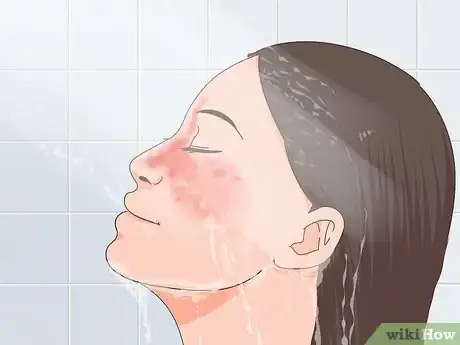
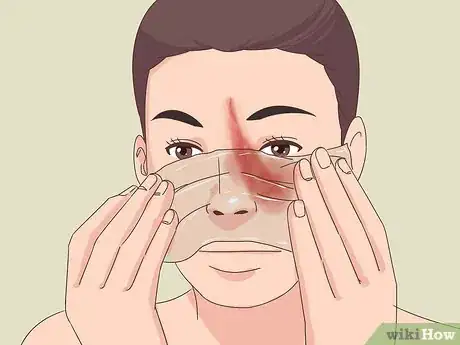
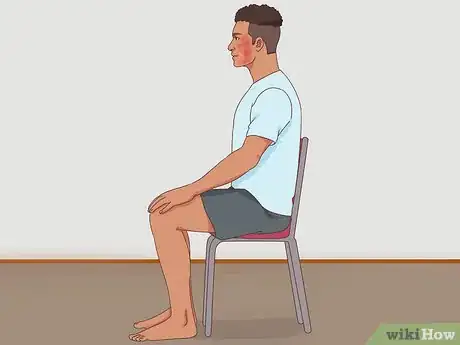
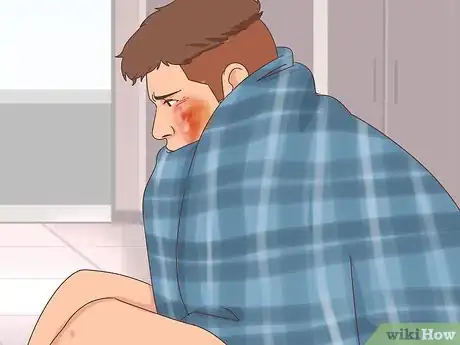

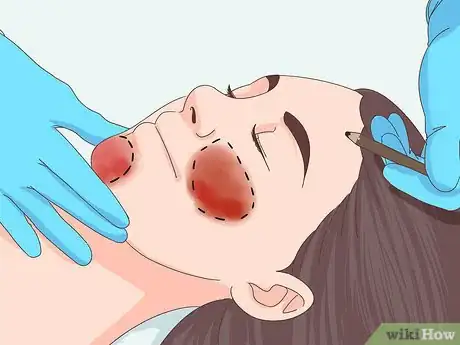
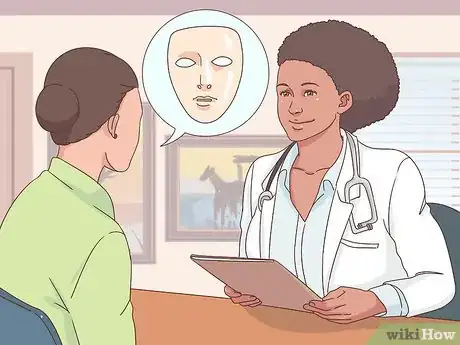
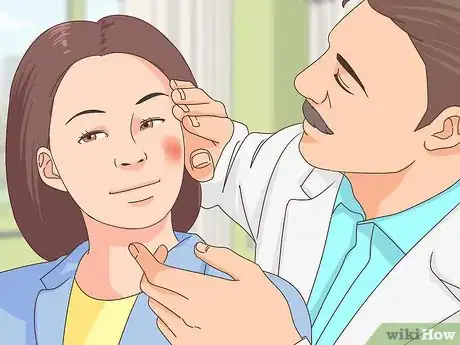
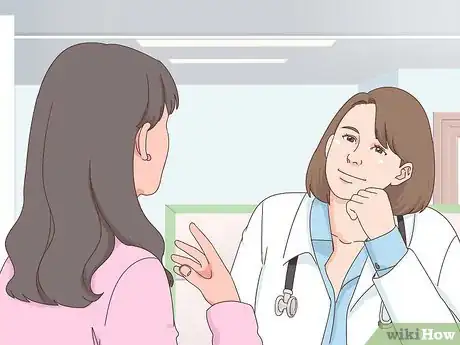
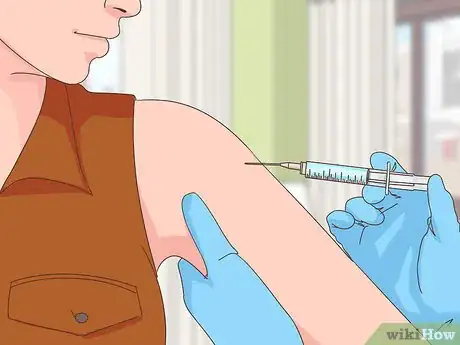
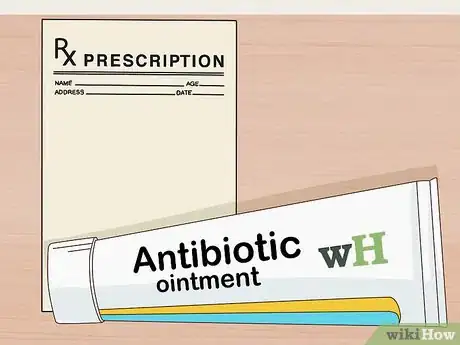
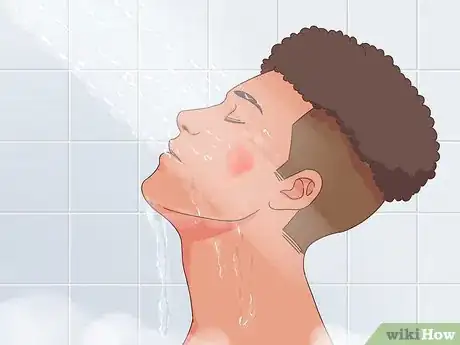
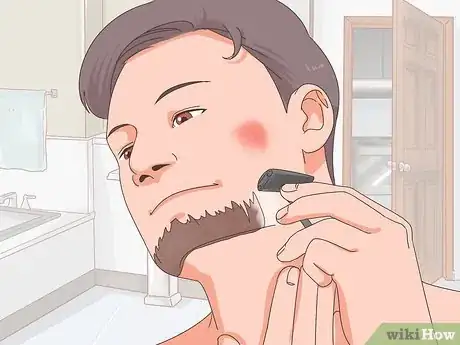
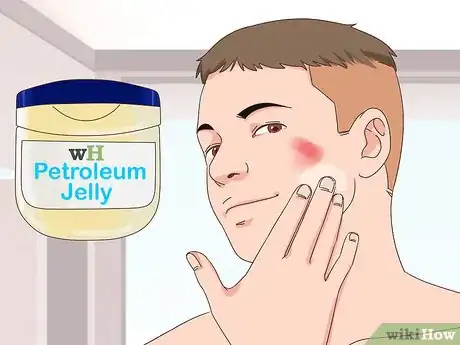
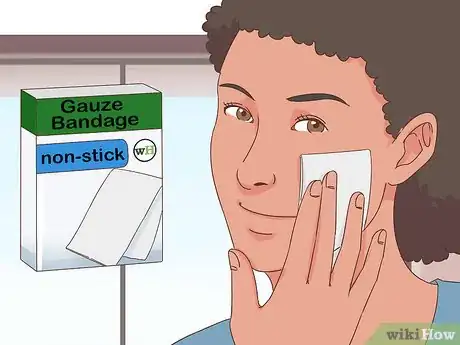
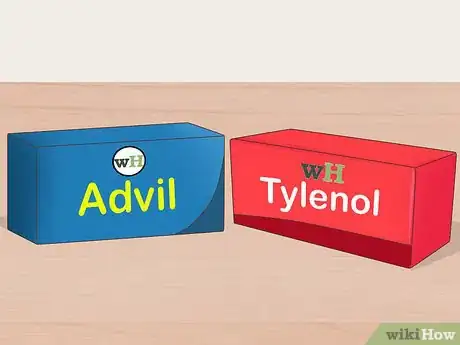
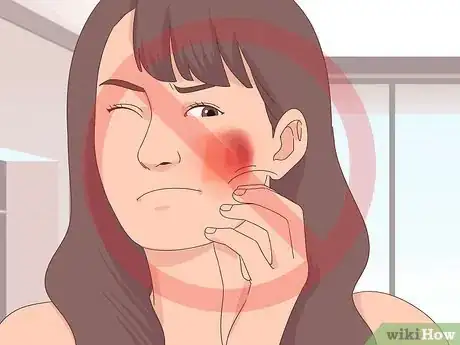
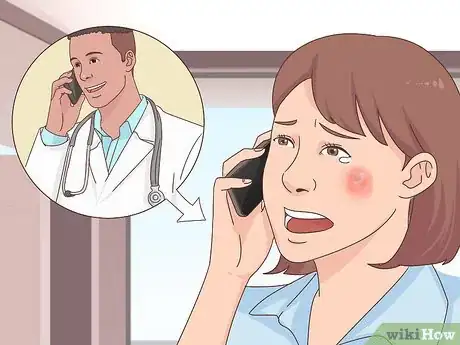
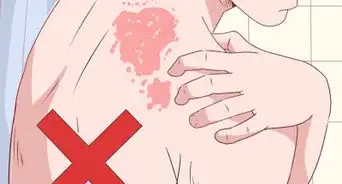






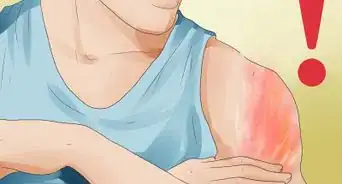
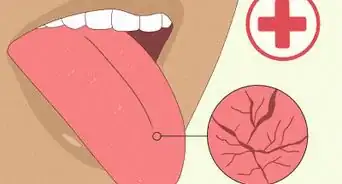

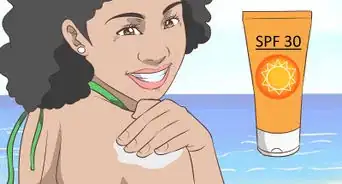
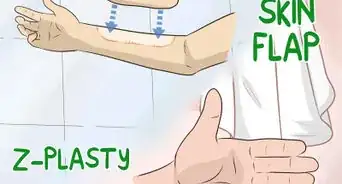

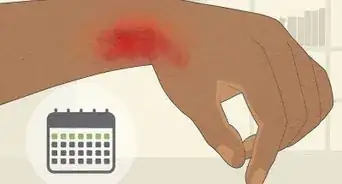







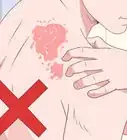

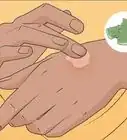




































Medical Disclaimer
The content of this article is not intended to be a substitute for professional medical advice, examination, diagnosis, or treatment. You should always contact your doctor or other qualified healthcare professional before starting, changing, or stopping any kind of health treatment.
Read More...